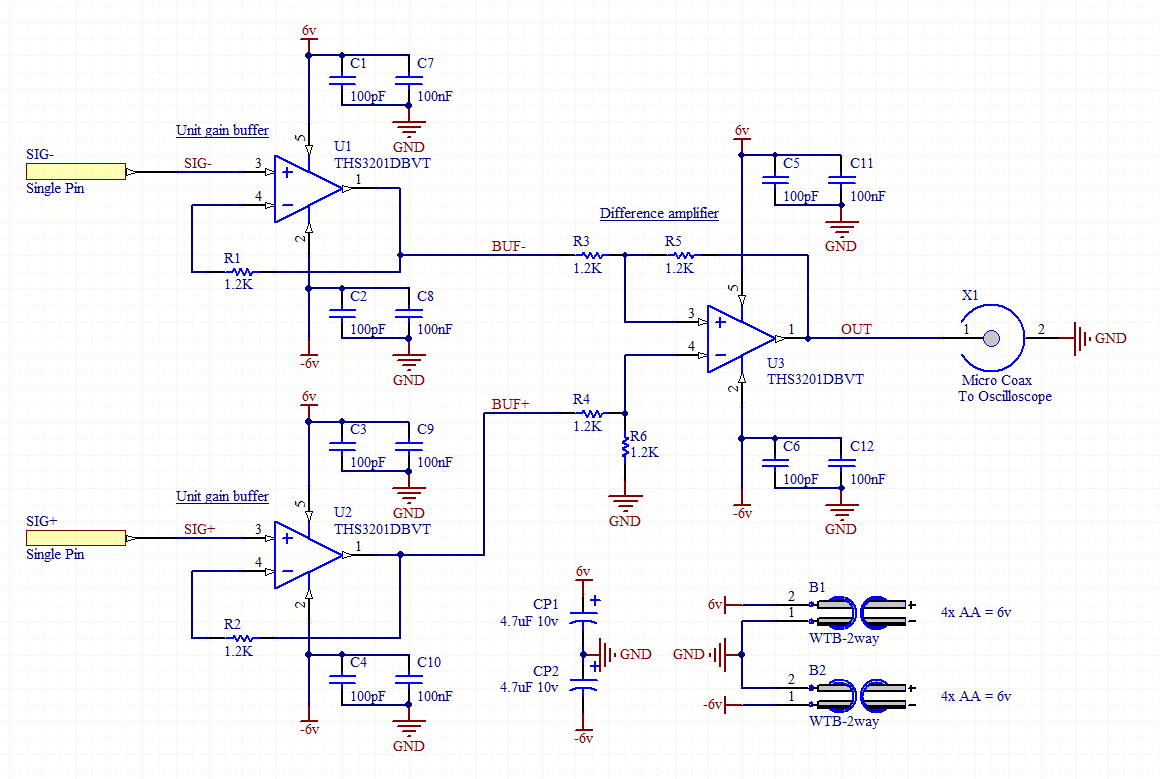This question is an extension of Homebrew differential 'scope probe. I thought I should make this a new question though.
I need to measure a 100Mb/s LVDS signal to check its integrity. I will try to get hold of a 'scope with a 600MHz bandwidth, but I need a differential probe, and can't afford a real one. So I have designed a solution using the THS3201DBVT 1.8GHz current feedback op amp.
This is my first design using a current feedback amp, and my first high bandwidth design. I would be very grateful for any feedback (pun, sorry).



Added: Thanks to The Photon for suggesting removing the ground plane under the input pins of the OpAmps. Here's the layer just below the top layer, showing the new cutouts. The same thing has been done to the other layers too.

